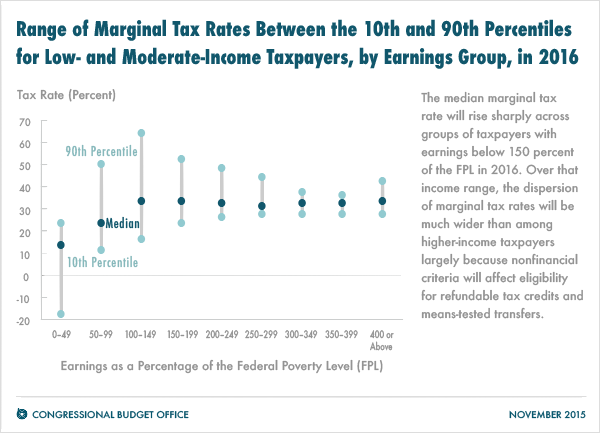How We Tax the Poor
Everyone knows how progressive taxes work: You pay a low rate on the first dollar you earn, but as your income goes up, you have to pay a higher and higher percentage of the additional money. This taxes the rich more heavily than the poor.
Too often ignored, though, is that poverty programs also function as a tax. When you earn more on your own, your benefits are cut. The prospect of losing benefits can discourage people from taking on additional work, and can cancel out the advantage of being in a low tax bracket.
The CBO has a new report nicely illustrating this phenomenon, looking at the combined effects of state and federal income taxes, federal payroll taxes, food stamps, and Affordable Care Act subsidies. Eye-popping chart of 2016 marginal tax rates:

In general, once you hit the poverty line, you'll face a flat tax of a bit above 30 percent — at least until you reach 450 percent of poverty, which is where the data here end. (Roughly two-thirds of the population falls below that mark, which this year is about $109,000 for a family of four.)
And the situation will be very bad for some. Between 50 and 150 percent of the poverty level, more than 10 percent of workers will pay a marginal rate above 50 percent. Why will they pay more than others who are similarly situated? As the CBO explains, "Much of that variation is due to differences in family characteristics, which affect eligibility for refundable tax credits and assistance programs and the extent to which people take up those benefits."
Restructuring these programs so they phase out more gradually is a way to address this. I suggested one idea along those lines here.
The full details on the data behind the chart can be found on page 8 of CBO's report.
Robert VerBruggen is editor of RealClearPolicy. Twitter: @RAVerBruggen




